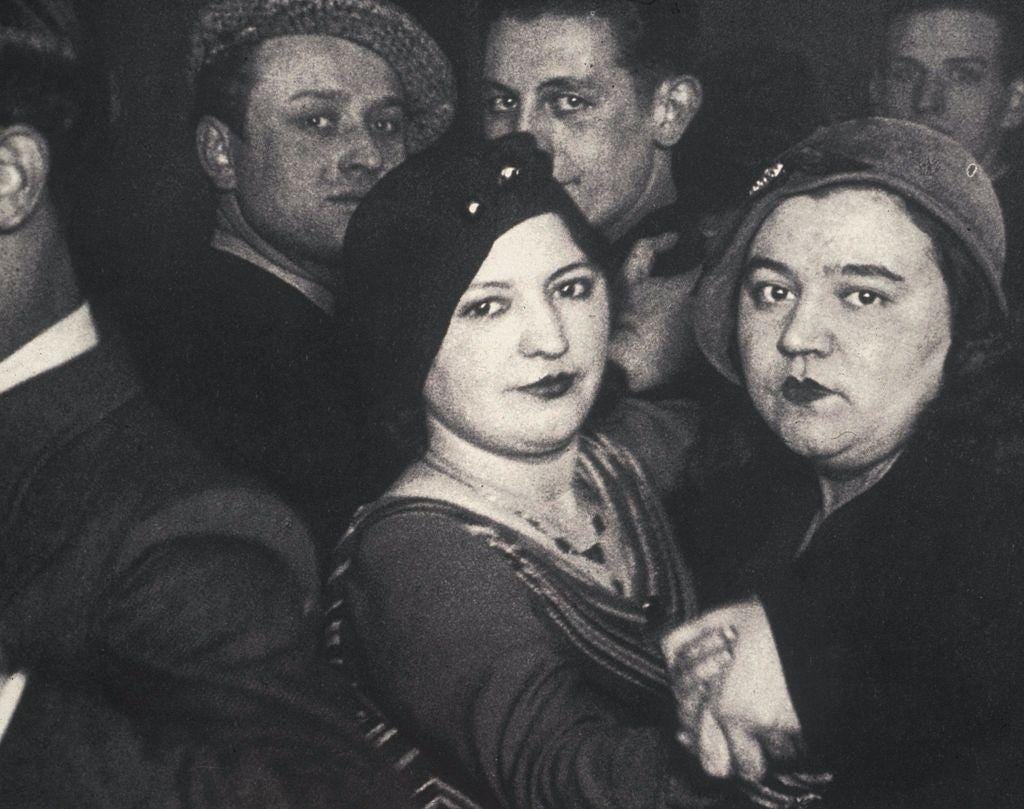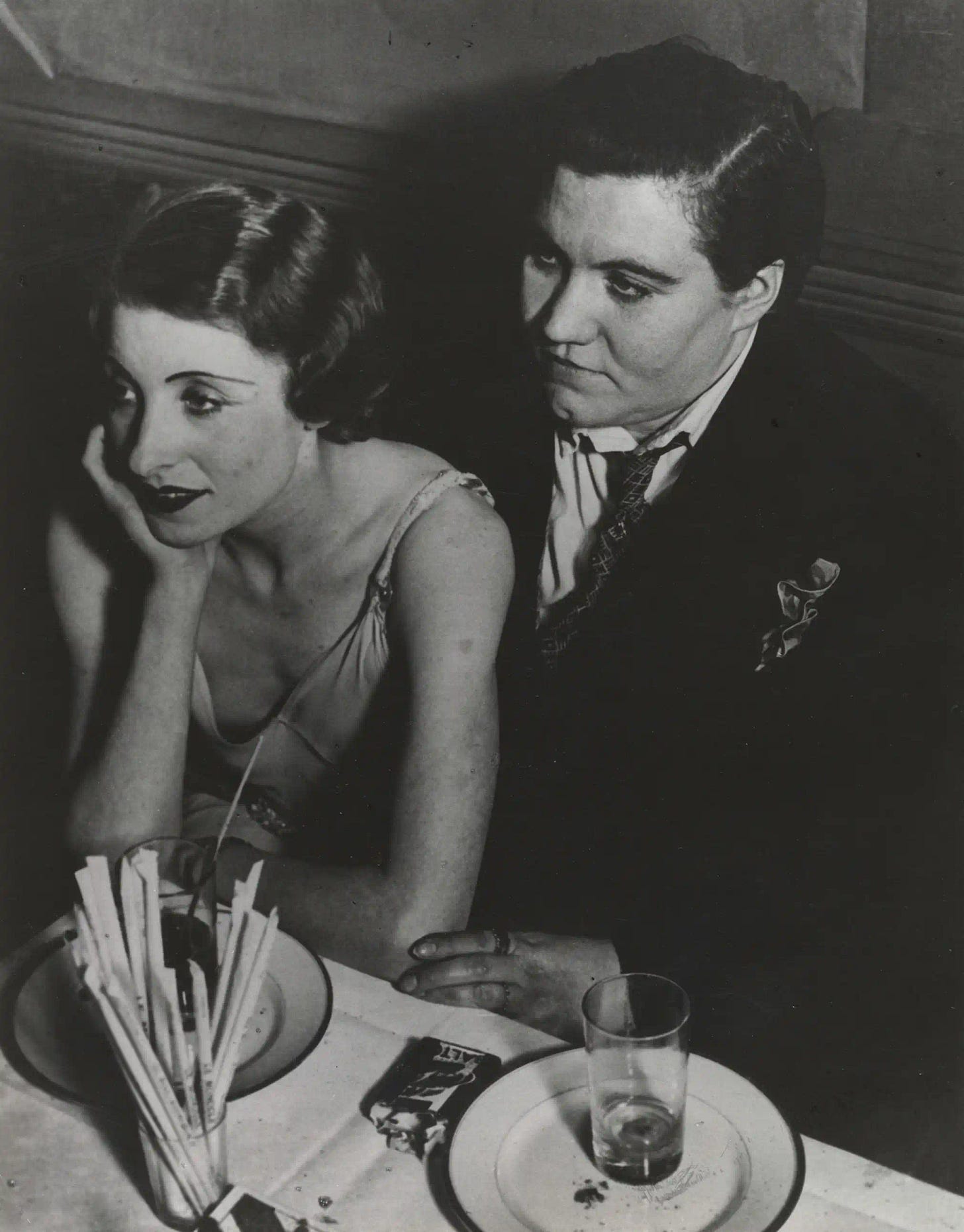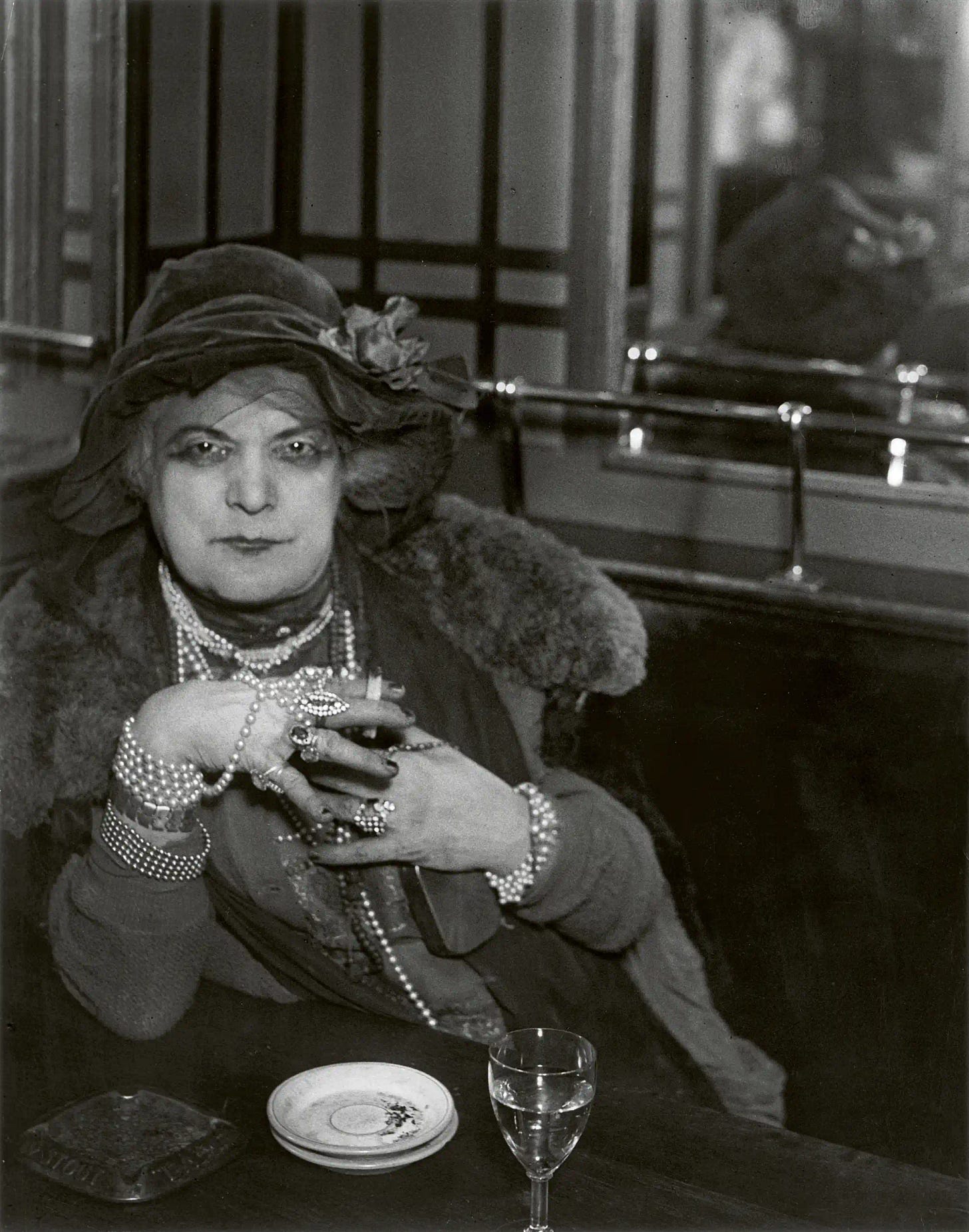“The Eye of Paris” was born Gyula Hálasz in the Transylvania Region of present-day Romania to Hungarian and Armenian parents. Brassaï had an eye for the elusive, and in capturing photographs of France’s capital at night, he was able to document the universal nature of queer desire.
Eager to penetrate the world stuck in the shadowed back-alleys of the inner arrondissements, Brassaï saw himself in the tumultuous lives of prostitutes, mobsters, gamblers, showgirls, drag performers, addicts, and queer folk. His portraits a trenchant study of individuals who chose to live by their own rules, but only in the spaces that welcomed them in from the rigid outside. The lone photographer felt at home in the underground, a realm of the alien and the alienated, because he, too, was an outcast.
Not unlike the work of his predecessor Henri de Toulouse-Lautrec, Brassaï found his subjects in the realm of entertainment: boudoirs, jazz clubs, bars, and cabarets. Unlike the painter however, the photographer was welcomed into his spaces as a fellow traveler— gaining a far more personal lens on the individuals who captivated him. Not a gawker, but a confidant. As if his work is a dimly-lit medieval chapel, his fellow outcasts are the saints that adorn the mantels as the only light source for the onward viewer.
The artists at the center of the Paris Surrealist project wanted the ordinary defamiliarized, with poet Andre Breton calling it ‘defamiliarization depaysement’— translated from French as “estrangement.” In pointing out that “strangeness” in the French language is almost always connotated with a foreign entity, the word estrange has the same root as etrangere: foreigner. The queer folks of Brassaï’s portfolio were the “others” of Parisian society, holding no entity of personalization outside the spaces they frequented in the evenings away from their day jobs, families, and class constraints.
Even among the liberal circles of free-thinking artists like that of the western surrealists, homosexuality laid no parallel to the idealized heterosexual attraction (l’amour fou) so easily portrayed in the movement. The surrealists' later 1928 'investigation' into questions concerning sexuality was one more manifestation of the interest in and the threat posed by “deviant” sexuality— even Breton infamously pronounced his repugnance for homosexuality.
Queerness as a practice, then, was deemed unacceptable; this intolerance often attributed to the rise of Nazi sympathizing parties throughout occupied Europe. Nazism was so unapologetically pro-male and pro-masculinity, that even French and German left-wing anti-fascists accused National Socialists of homosexuality. As a result of this aversion to queerness even among the surrealists, they worked to deconstruct not so much the body and sexuality of man, but rather, the body and sexuality of woman as subversive object.
Brassaï understood the allure of queer desire— a force not yet touched by many creatives of his time. “Night does not show things, it suggests them,” the photographer once said. ‘It disturbs and surprises us with its strangeness. It liberates forces within us which are dominated by our reason during the daytime.” There is nothing to hide within his portraiture: no force curating your lens and no aversion of eye contact. If you dare to confront the very human need for gratification, what is left but a sense of relief? Before there was Goodbye to Berlin and Cabaret, there was “Paris at Night:” a constant reminder that humanity desires expression even in times of social repression.







